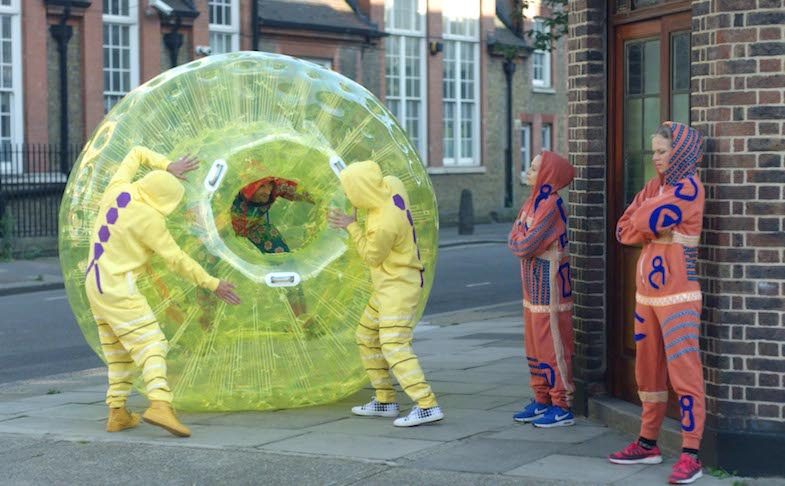
John Walter, A Virus Walks into a Bar, 2018. Part of the exhibition John Walter: CAPSID at HOME in Manchester
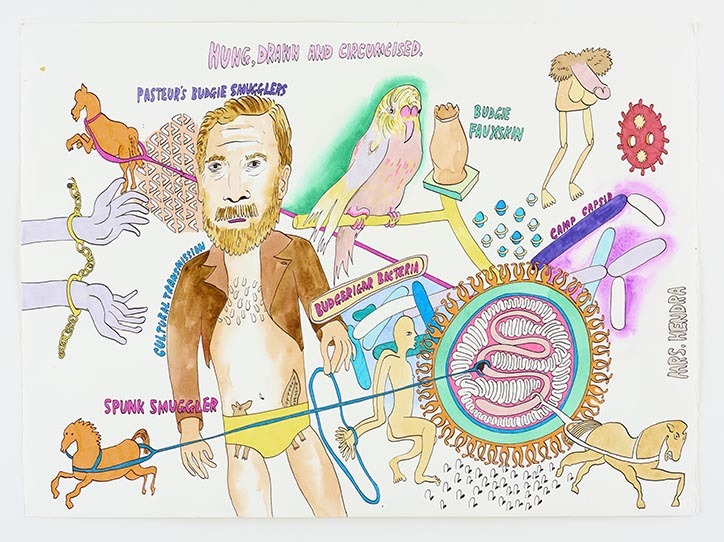
John Walter, Hung Drawn and Circumcised. Part of the exhibition John Walter: CAPSID at HOME in Manchester
Over the course of a 3 year Wellcome funding, Walter has embedded himself inside the Towers Lab at University College London. The research center, headed by Prof Greg Towers, studies the molecular details of host virus interactions, focusing particularly on HIV-1, the cause of AIDS, and its relationship with the innate immune system.
The artist attended lab meetings, took note of the scientific jargon, asked awkward questions and learnt more about the research done at the lab. At the heart of his collaboration with the scientists is a study of the HIV capsid. The CAPSID is a protein shell that surrounds the virus (including HIV) and enables its transmission. CAPSID is a rather sneaky bastard. It protects the virus’s DNA from being seen and acts as an invisibility cloak.
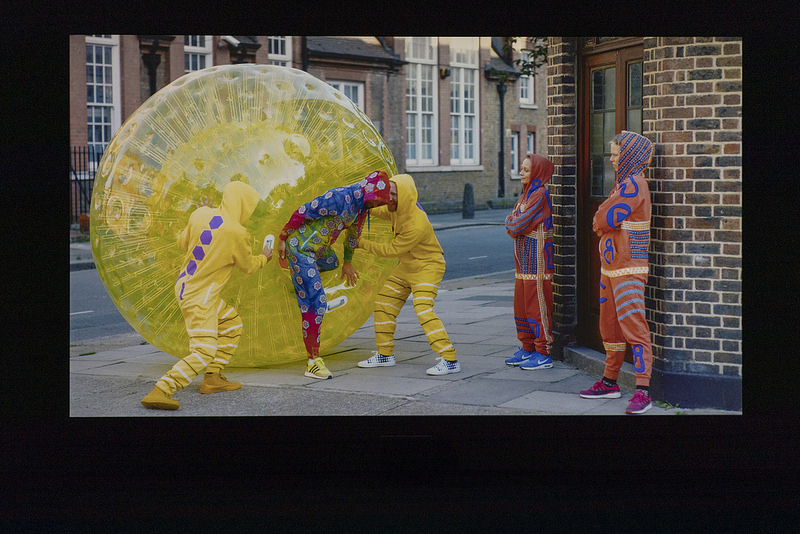
John Walter, CAPSID at HOME in Manchester. Installation photo by Lee Baxter
John Walter, A Virus Walks Into A Bar (trailer), 2018. Part of the exhibition John Walter: CAPSID at HOME in Manchester
You can see the deftness of the virus in action in A Virus Walks into a Bar. The short film (a new HOME Artist Film commission) uses the bar motif of British soap operas to depict how the HIV virus infects human cells.
The bar is the immune system. It is guarded by bouncers who refuse to let the virus in when he turns up in his big yellow zorb ball. They know he means trouble. Other customers are not so cautious. The new guy looks so harmless and chummy they let him buy them beers. Once inside, our CAPSID character fends off more resistance from other customers (who play the role of proteins and cytoplasm) and slowly makes his way to the counter where the barmaid is standing (she personifies the nucleus of the human cell.) From there all hell breaks loose….
John Walter‘s talent in expressing complex scientific ideas in an engaging and eccentric way is on show this Winter at HOME in Manchester.
John Walter: CAPSID mixes animation, paintings, textile craft, humour, pop culture and more to investigate the complexities of virology and the spread of deadly infection but also scientific language and protocols.
The result of his research is informative without ever being didactic nor illustrative. It is relentlessly bombastic, witty, seductive. And yet, it remains anchored in rigorous science.
I was lucky enough to attend the guided tour of the show with John Walter and structural virologist Professor Greg Towers. Anyone doubting the benefits of a close art and science relationship should have seen these two explaining the exhibition. Walter spent most of his time detailing the scientific bits while Towers was busy describing his own take on the artistic merits of the works. I don’t think the role reversal had been planned but it demonstrated how much two worlds that are academically and culturally presented as separate can gain from closer connections and exchanges.
Towers described how the artist’s sometimes surprising questions have led his team to question their own lines of investigation and open up new ones. Beyond the lab, the artist also discussed with undergraduate students, got involved in the lab’s science outreach programs and challenged scientific minds to think more reflexively about their own research.
The challenging process went two ways though as Walter used scientific imagery, codes and jargon as a source material to innovate and expand his own artistic practice.
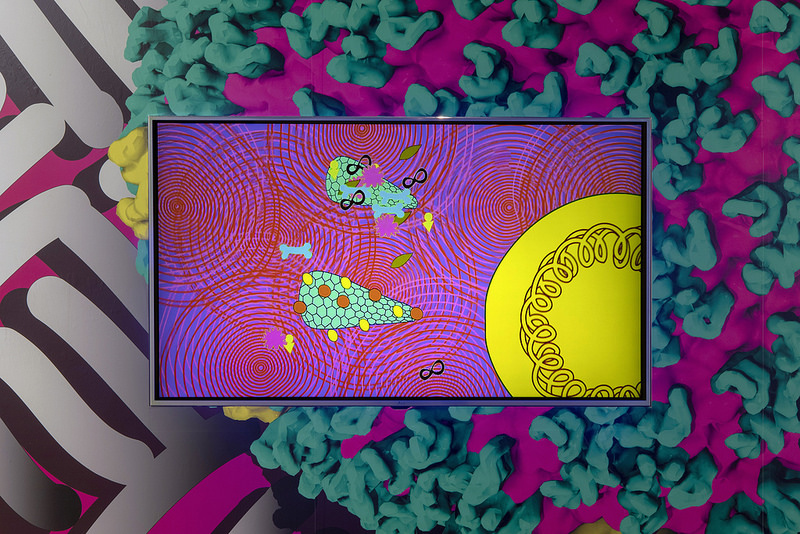
John Walter, CAPSID at HOME in Manchester. Installation photo by Lee Baxter
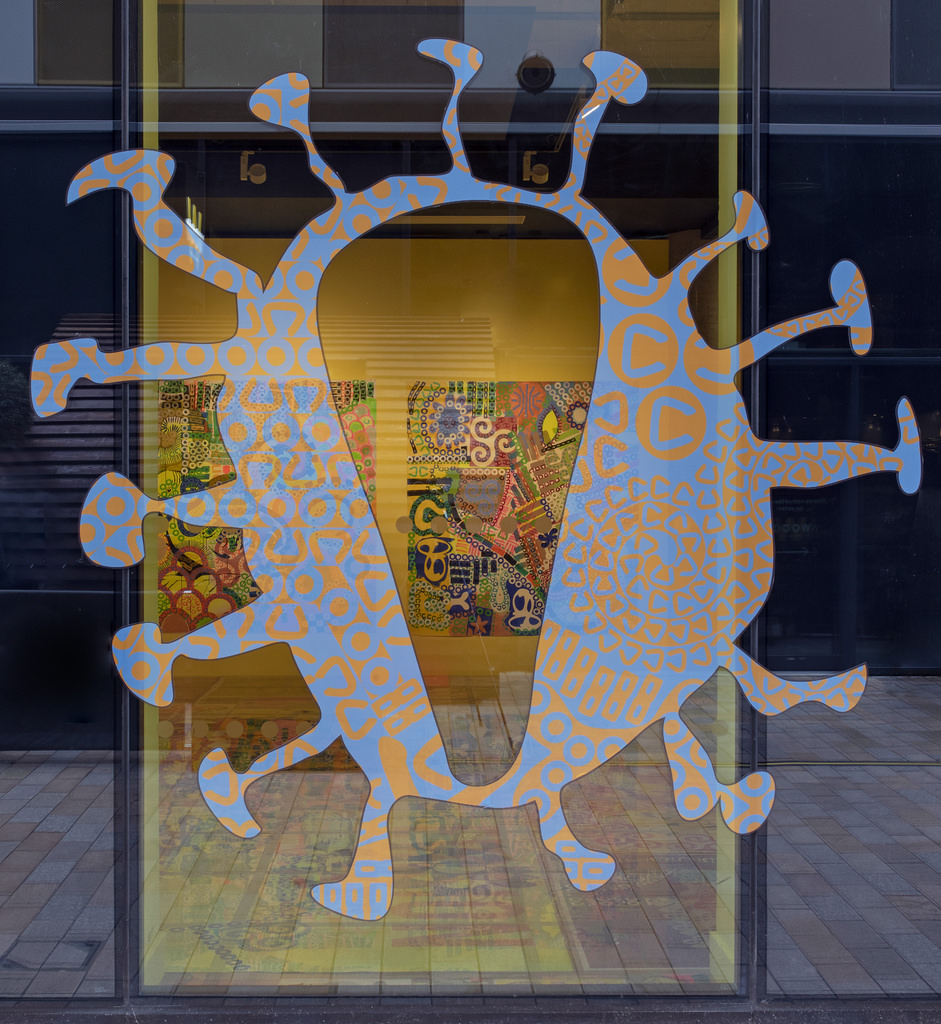
John Walter, CAPSID at HOME in Manchester. Installation photo by Lee Baxter
Just like the virus contaminates the healthy cell, the world of science contaminated the world of art and vice versa. This contagion is further reflected in the whole exhibition space where prints cover the floor, stickers are glued on the windows to allow passers-by to get a sense and a curiosity for what is inside the gallery, wallpaper seems to interact with paintings and videos, etc. Immersed in this overwhelming assault on the senses, the visitor is led to question his or her own role in the exhibition.
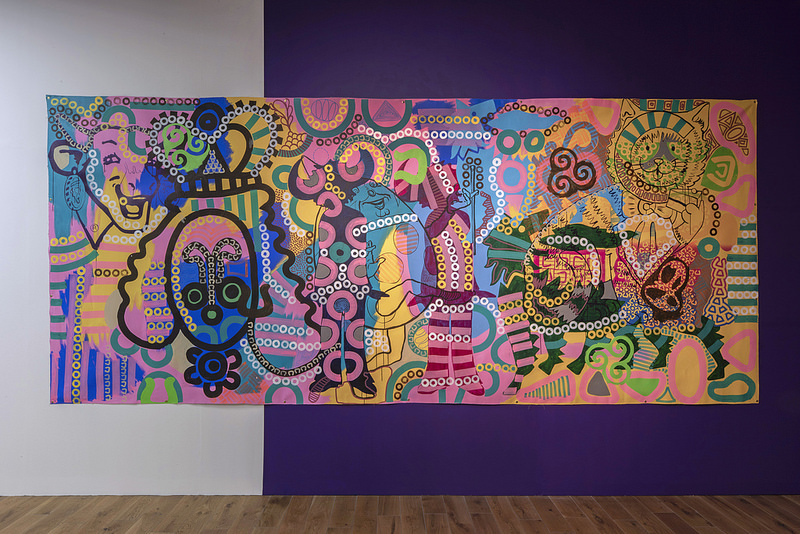
John Walter, CAPSID at HOME in Manchester. Installation photo by Lee Baxter
Walter’s inventive ability to find new ways of expressing how viruses behave is truly impressive. For example, he experimented with patterned metal screens to signify the “uncoating” moment when the CAPSID releases viral acid into its host. He also produced 5 metres wide paintings in which Jamiroquai, the AGIP logo, the La Vache Qui Rit cow and other iconic characters of pop/corporate culture evoke the co-factors (particles that facilitate the capsid’s access to the nuclear pore.) There’s so much to discover in the exhibition…
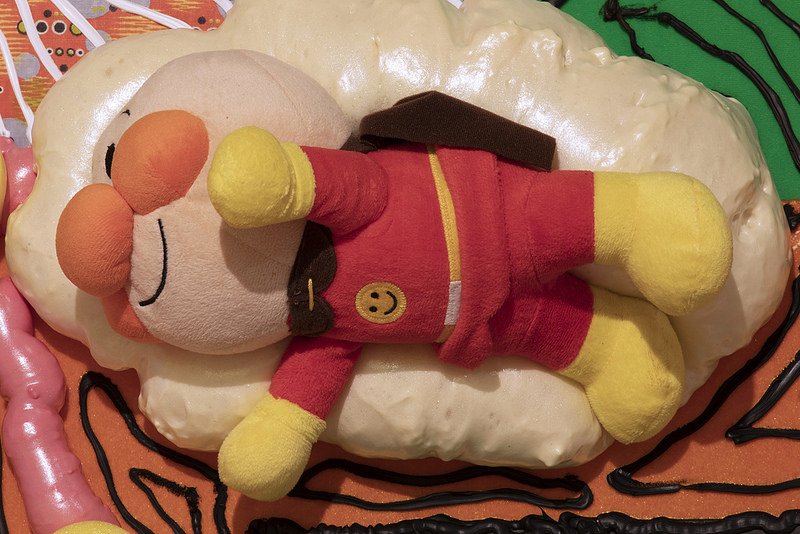
John Walter, Innate Sensing Mechanism (detail), CAPSID at HOME in Manchester. Installation photo by Lee Baxter
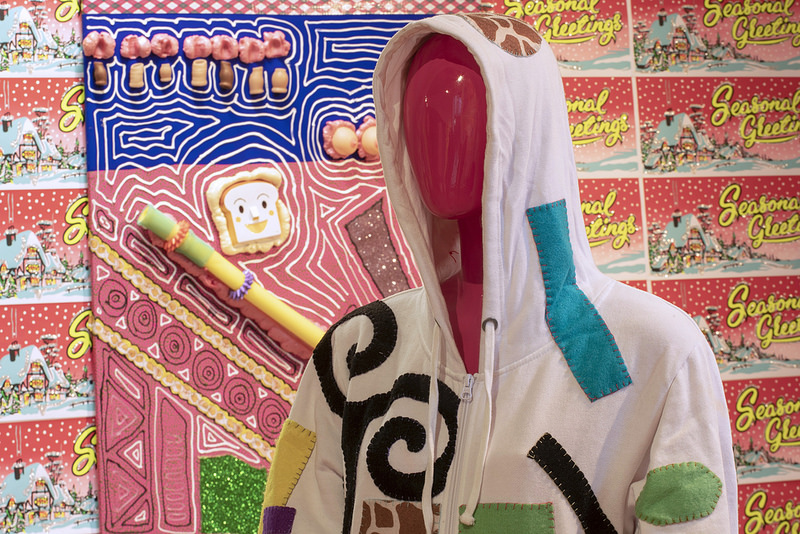
John Walter, Innate Sensing Mechanism, CAPSID at HOME in Manchester. Installation photo by Lee Baxter
I was particularly fascinated by the series of Innate Sensing Mechanism paintings.
Garish objects such as plush toys and silicon foreskin (that’s when i learnt that there’s a market for circumcised men want their foreskin back) are glued on the compositions using pink adhesive foam. They stand for the defense mechanism by which a cell can detect foreign genetic material and kill it. Walter used a silicon gun to make sure that the invasive materials could not be rejected. The strength of these paintings (and of the other works in the exhibition) is that they stand on their own two feet, you don’t need to be aware of the scientific background to enjoy these mesmerizingly outlandish collages.
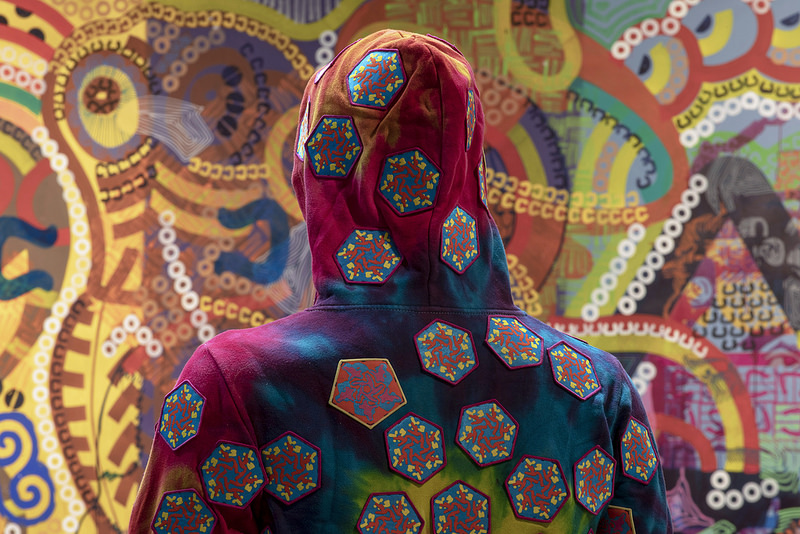
John Walter, CAPSID at HOME in Manchester. Installation photo by Lee Baxter
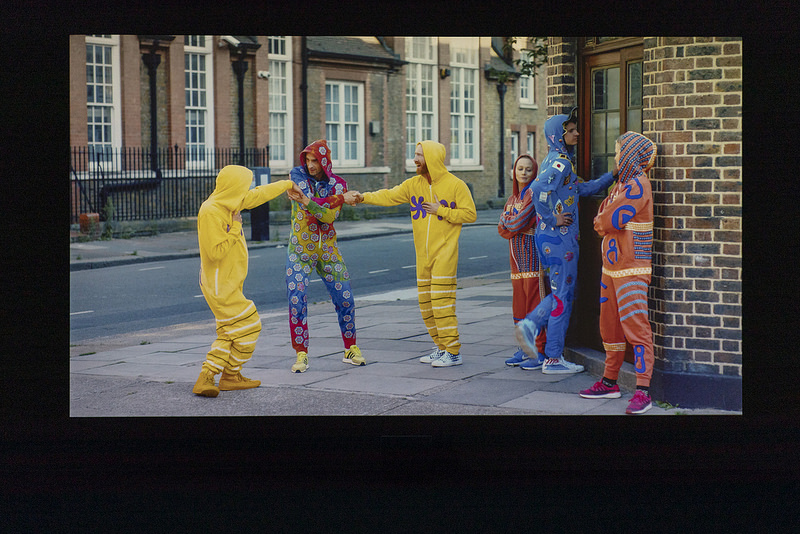
John Walter, CAPSID at HOME in Manchester. Installation photo by Lee Baxter
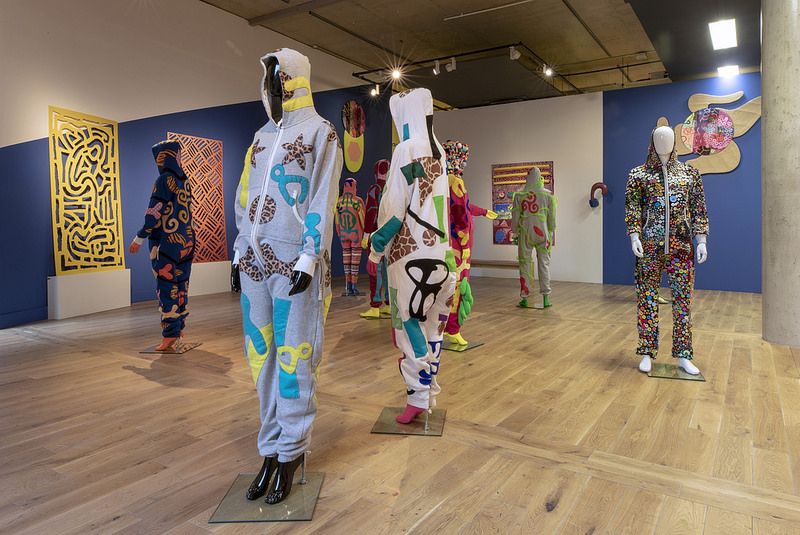
John Walter, CAPSID at HOME in Manchester. Installation photo by Lee Baxter
And of course i need to go back to A Virus Walks Into A Bar and mention the onesies! The actors in the film are dressed in costumes hand-customised by the artist. There are 30 of them. Some directly echo Walter’s paintings. Others are covered in embroidery, patches, mini pompoms and buttons that seem to colonize and infect the garment. I loved how the silly onesies (no one will ever convince me they are not a bit silly) contrast with the white lab coats worn by scientists when they are interviewed on tv about their work.
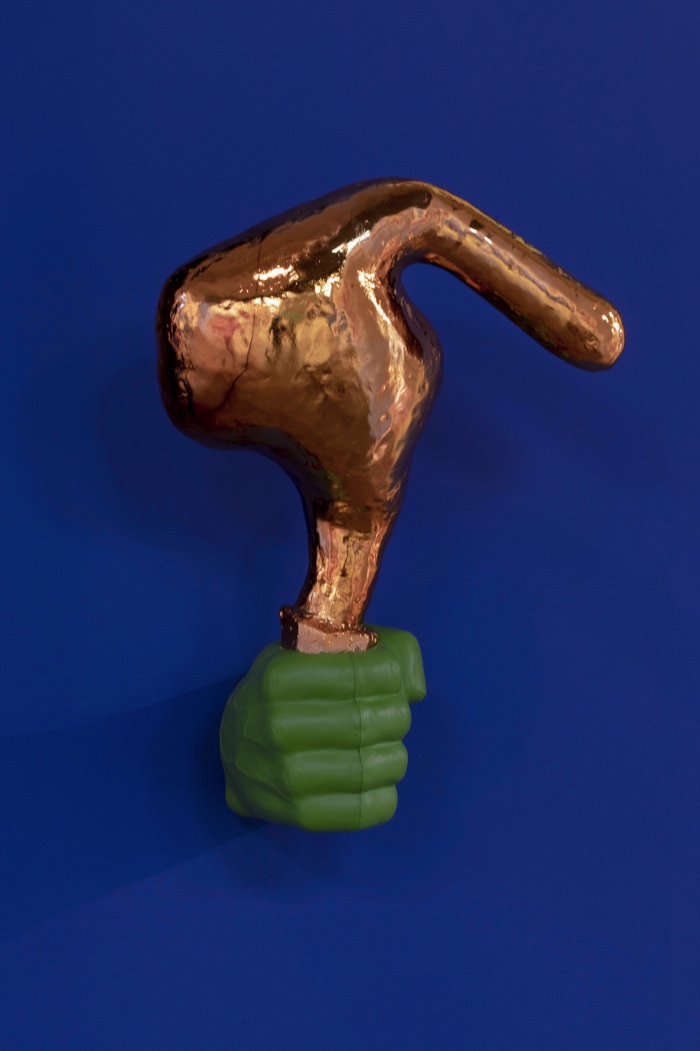
John Walter, CAPSID at HOME in Manchester. Installation photo by Lee Baxter
John Walter: CAPSID is playful, absurd, smart, poetical and often very moving. More importantly, it reminded me of the need to constantly refresh and stimulate public conversation around HIV. AIDS is still very much a crisis in some areas of the world. According to a research by UNAIDS, 37 million people are living with HIV, the highest number ever, yet a quarter do not know that they have the virus. Last year only, almost one million people died because of it.
More images from the exhibition:
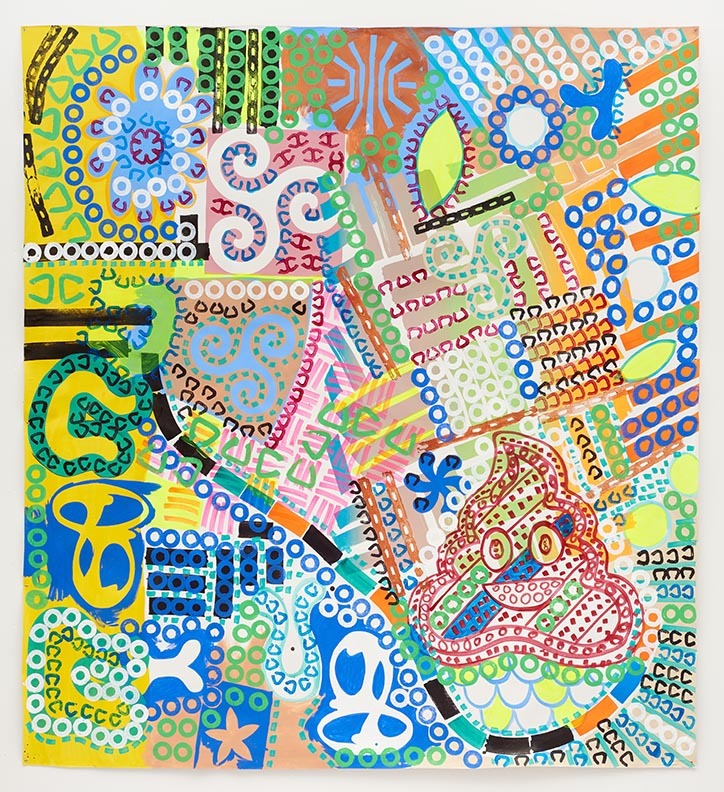
John Walter, Cytoplasm. Part of the exhibition John Walter: CAPSID at HOME in Manchester
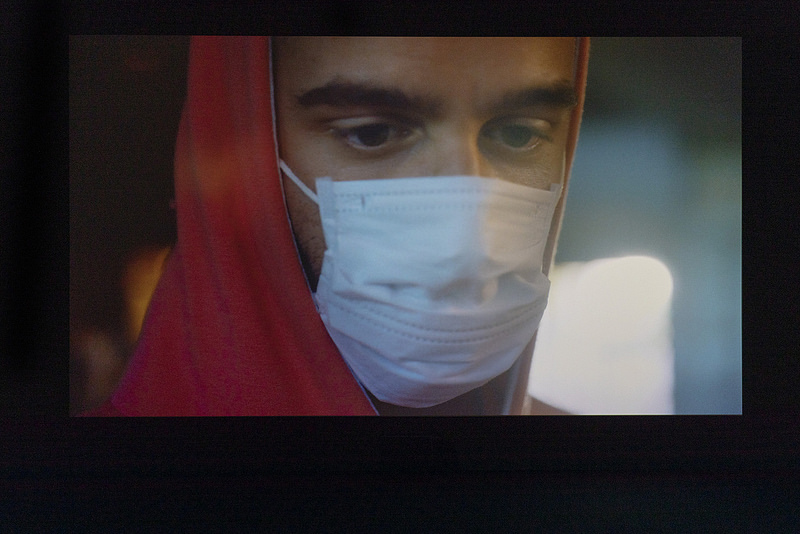
John Walter, CAPSID at HOME in Manchester. Installation photo by Lee Baxter
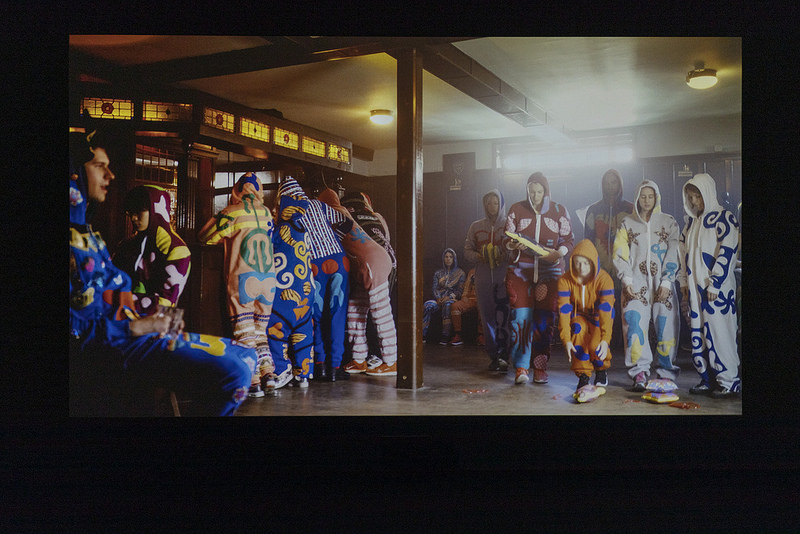
John Walter, CAPSID at HOME in Manchester. Installation photo by Lee Baxter
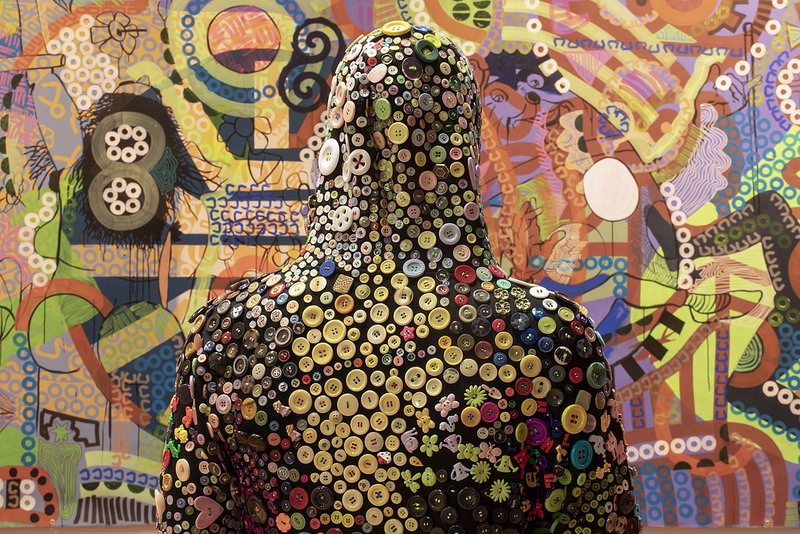
John Walter, CAPSID at HOME in Manchester. Installation photo by Lee Baxter
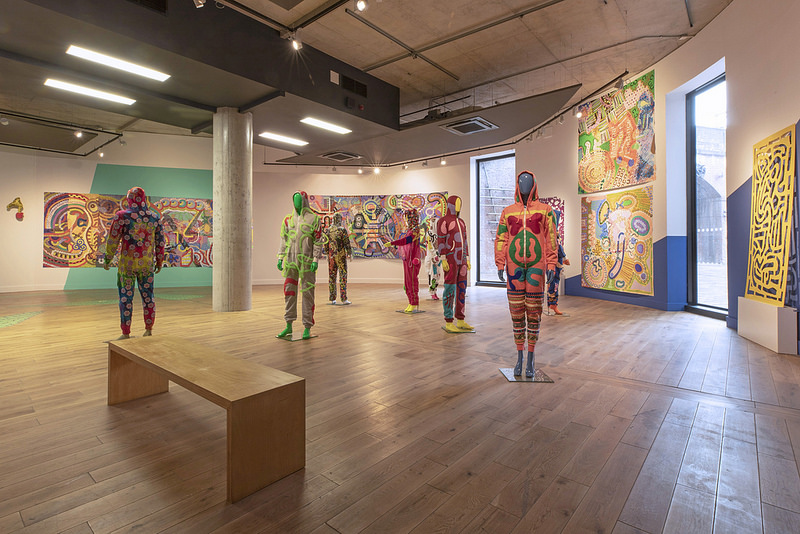
John Walter, CAPSID at HOME in Manchester. Installation photo by Lee Baxter
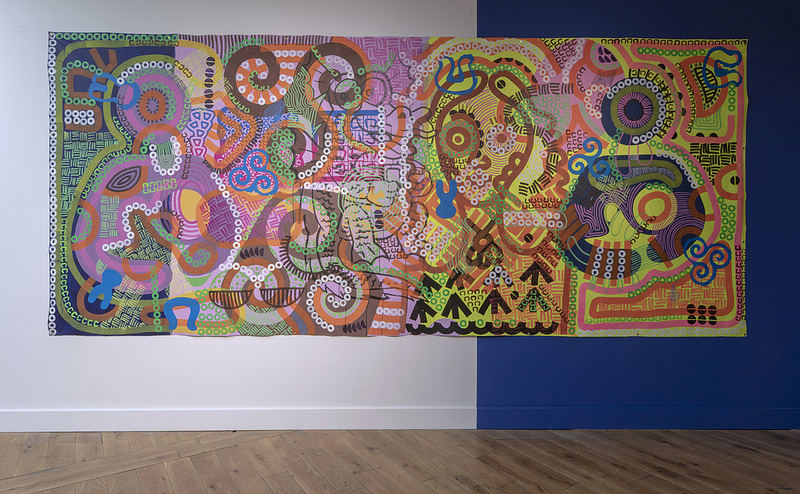
John Walter, CAPSID at HOME in Manchester. Installation photo by Lee Baxter

John Walter, CAPSID at HOME in Manchester. Installation photo by Lee Baxter
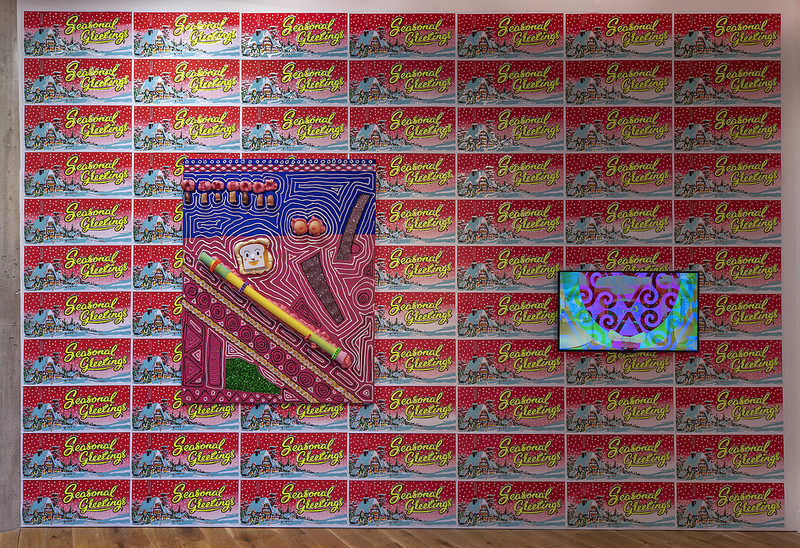
John Walter, CAPSID at HOME in Manchester. Installation photo by Lee Baxter
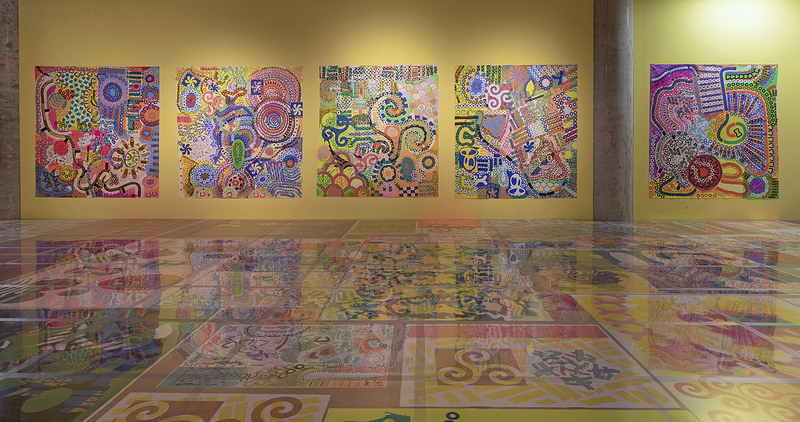
John Walter, CAPSID at HOME in Manchester. Installation photo by Lee Baxter
If you’re curious about the exhibition, i’d highly recommend this audio tour of the show with the artist.
John Walter: CAPSID is at HOME in Manchester until Sunday 6 Jan 2019.
